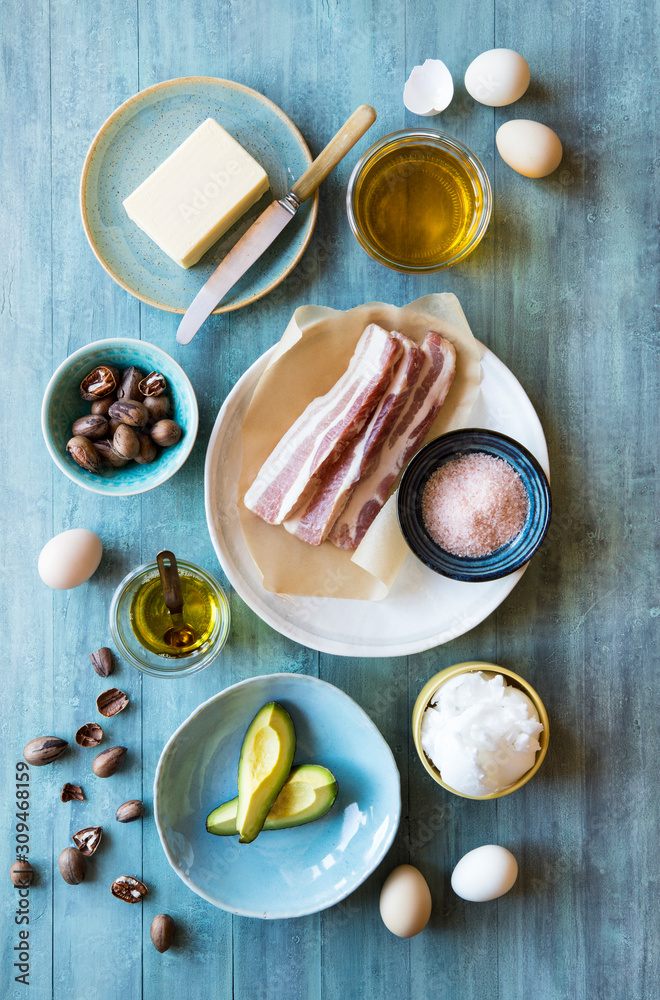Understanding the Ketogenic Diet
The ketogenic diet, commonly referred to as the keto diet, is a low-carbohydrate, high-fat diet designed to shift the body's metabolism from carbohydrates to fats. This metabolic state, known as ketosis, encourages the body to burn fat for energy instead of glucose, resulting in various health benefits including weight loss and improved mental clarity.
Getting Started with the Ketogenic Diet
Calculate Your Macros
The first step to successfully starting the ketogenic diet is to calculate your macronutrient intake. The typical macronutrient ratio for a ketogenic diet is:
- 70% fats
- 25% protein
- 5% carbohydrates
Use a keto calculator to determine your specific daily macronutrient needs based on your weight, age, gender, and activity level.
Choose Keto-Friendly Foods
Stock your pantry and fridge with keto-friendly foods. Here are some essential items:
- Fats and Oils: Olive oil, coconut oil, butter, ghee, avocado oil
- Protein Sources: Meat, poultry, fish, eggs
- Low-Carb Vegetables: Leafy greens, broccoli, cauliflower, zucchini
- Dairy: Cheese, heavy cream, Greek yogurt (in moderation)
- Nuts and Seeds: Almonds, walnuts, flaxseeds, chia seeds
- Beverages: Water, coffee, tea (unsweetened)
Avoid High-Carb Foods
To maintain ketosis, avoid the following high-carb foods:
- Grains: Rice, pasta, bread, cereals
- Sugary Foods: Candy, soda, fruit juices
- Starchy Vegetables: Potatoes, corn, peas
- Legumes: Beans, lentils, chickpeas
- Fruits: Most fruits except for small portions of berries
Tips for Success on the Ketogenic Diet
Plan Your Meals
Meal planning is crucial for staying on track with the keto diet. Plan your meals and snacks ahead of time to ensure you have plenty of keto-friendly options available. Batch cooking and meal prepping can save time and help you avoid the temptation of non-keto foods.
Stay Hydrated
Drinking enough water is essential on the ketogenic diet. Aim for at least 8 glasses of water a day. Proper hydration helps maintain electrolyte balance and can alleviate common side effects of starting keto, such as the "keto flu."
Monitor Your Electrolytes
As your body adjusts to ketosis, it excretes more electrolytes. To prevent imbalances, ensure you’re getting enough sodium, potassium, and magnesium. Consider incorporating the following into your diet:
- Sodium: Add a pinch of salt to your meals or drink bone broth.
- Potassium: Eat leafy greens, avocados, and nuts.
- Magnesium: Incorporate nuts, seeds, and dark chocolate into your diet.
Gradual Transition
If you’re transitioning from a high-carb diet, consider gradually reducing your carbohydrate intake over a few weeks instead of going low-carb overnight. This can help minimize side effects and make the transition smoother.
Listen to Your Body
Pay attention to how your body responds to the ketogenic diet. Adjust your food intake based on your energy levels, hunger, and overall well-being. Everyone's body reacts differently, so it's important to find what works best for you.
Potential Challenges and How to Overcome Them
Keto Flu
The keto flu is a common side effect when starting the ketogenic diet. Symptoms include headaches, fatigue, dizziness, and irritability. To overcome keto flu, ensure you’re staying hydrated, maintaining electrolyte balance, and getting enough rest.
Cravings and Hunger
Cravings for high-carb foods can be challenging. Combat this by eating enough fats and proteins to stay full and satisfied. Having keto-friendly snacks on hand can also help curb cravings.
Social Situations
Navigating social events and dining out can be tricky on a ketogenic diet. Plan ahead by researching keto-friendly options at restaurants or bringing your own dishes to gatherings. Communicate your dietary needs to friends and family to ensure there are options available for you.
Sample Keto Meal Plan for Beginners
Breakfast
- Keto Omelet: Eggs, cheese, spinach, and mushrooms cooked in butter
- Avocado Smoothie: Avocado, coconut milk, spinach, and a dash of stevia
Lunch
- Caesar Salad: Romaine lettuce, grilled chicken, parmesan cheese, and a high-fat dressing
- Zucchini Noodles: Topped with a rich Alfredo sauce and shrimp
Dinner
- Grilled Salmon: Served with a side of steamed broccoli and a butter sauce
- Beef Stir-Fry: Cooked in coconut oil with bell peppers and onions
Snacks
- Cheese Cubes: With a handful of nuts
- Keto Fat Bombs: Made from coconut oil, cocoa powder, and a sweetener
Long-Term Success on the Ketogenic Diet
Achieving long-term success on the ketogenic diet requires consistency and commitment. Here are some additional tips to help you stay on track:
Track Your Progress
Keep a food diary or use a tracking app to monitor your macronutrient intake and progress. This can help you stay accountable and make necessary adjustments to your diet.
Stay Active
Incorporate regular exercise into your routine to enhance the benefits of the ketogenic diet. Physical activity can help boost weight loss, improve mental clarity, and increase overall well-being.
Join a Community
Connecting with others who are also following the ketogenic diet can provide support and motivation. Join online forums, social media groups, or local meetups to share experiences, recipes, and tips.
Educate Yourself
Continuously educate yourself about the ketogenic diet. Stay updated on the latest research, trends, and tips to optimize your keto journey. Knowledge is power and can help you make informed decisions about your diet.
By following these guidelines and tips, you can successfully start and maintain the ketogenic diet, achieving your health and wellness goals.

